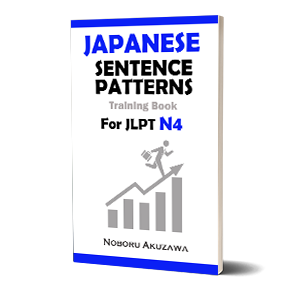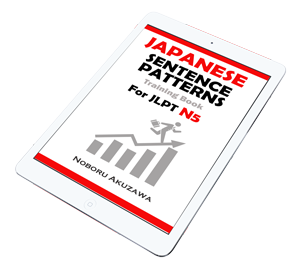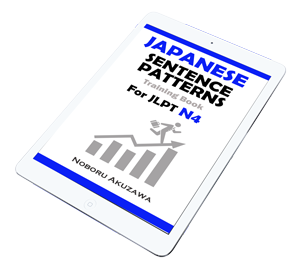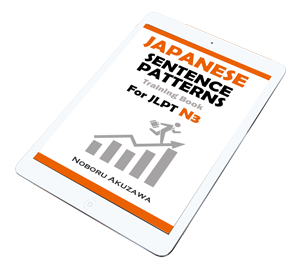Meaning: in, at, on
で is used to indicate the location of an action. The Japanese particle で (de) is used to indicate the place at which an action or event takes place. It is translated as “at,” “in,” or “on” in English.
Formation:
Location + で
★ The particle で comes after the place (noun) and before the action (verb) in the sentence.
日本語 / にほんご / Japanese
(1) 私は学校で日本語を勉強する/勉強します。
(2) 夜、兄は家でギターをひく/ひきます。
(3) 昨日、姉はこの食堂で晩御飯を食べた/食べました。
(4) 先週、姉はあの店でシャツを買った/買いました。
(5) 去年、私の家族はあの海で泳いだ/泳ぎました。
(6) 日曜日、八百屋で野菜を買った/買いました。
ことばと表現 / Words & Expressions
夜【よる yoru】night
ギター【ぎたー gitâ】guitar
ひく【ひく hiku】to play (string instrument)
昨日【きのう kinô】yesterday
食堂【しょくどう syokudô】cafeteria, dining hall
晩御飯【ばんごはん bangohan】dinner
先週【せんしゅう sensyû】last week
店【みせ mise】shop, store
シャツ【しゃつ syatsu】shirt
去年【きょねん kyonen】last year
海【うみ umi】sea
日曜日【にちようび niti-yôbi】Sunday
八百屋【やおや yaoya】vegetable shop
野菜【やさい yasai】vegetable
英語 / えいご / English
(1) I study Japanese at school.
(2) At night, my older brother plays the guitar at home.
(3) Yesterday, my older sister ate dinner at this cafeteria.
(4) Last week, my older sister bought a shirt at that shop.
(5) Last year, my family swam in that sea.
(6) On Sunday, I bought vegetables at the greengrocer’s.
ひらがな / Hiragana
(1) わたしはがっこうでにほんごをべんきょうする/べんきょうします。
(2) よる、あにはいえでぎたーをひく/ひきます。
(3) きのう、あねはこのしょくどうでばんごはんをたべた/たべました。
(4) せんしゅう、あねはあのみせでしゃつをかった/かいました。
(5) きょねん、わたしのかぞくはあのうみでおよいだ/およぎました。
(6) にちようび、やおやでやさいをかった/かいました。
ローマ字 / Roman characters
(1) Watasi wa gakkô de nihongo o benkyô suru / benkyô simasu.
(2) Yoru, ani wa ie de gitâ o hiku / hikimasu.
(3) Kinô, ane wa kono syokudô de bangohan o tabeta / tabemashita.
(4) Sensyû, ane wa ano mise de syatsu o katta / kaimashita.
(5) Kyonen, watasi no kazoku wa ano umi de oyoida / oyogimashita.
(6) Niti-yôbi, yaoya de yasai o katta / kaimashita.



























No comments yet.